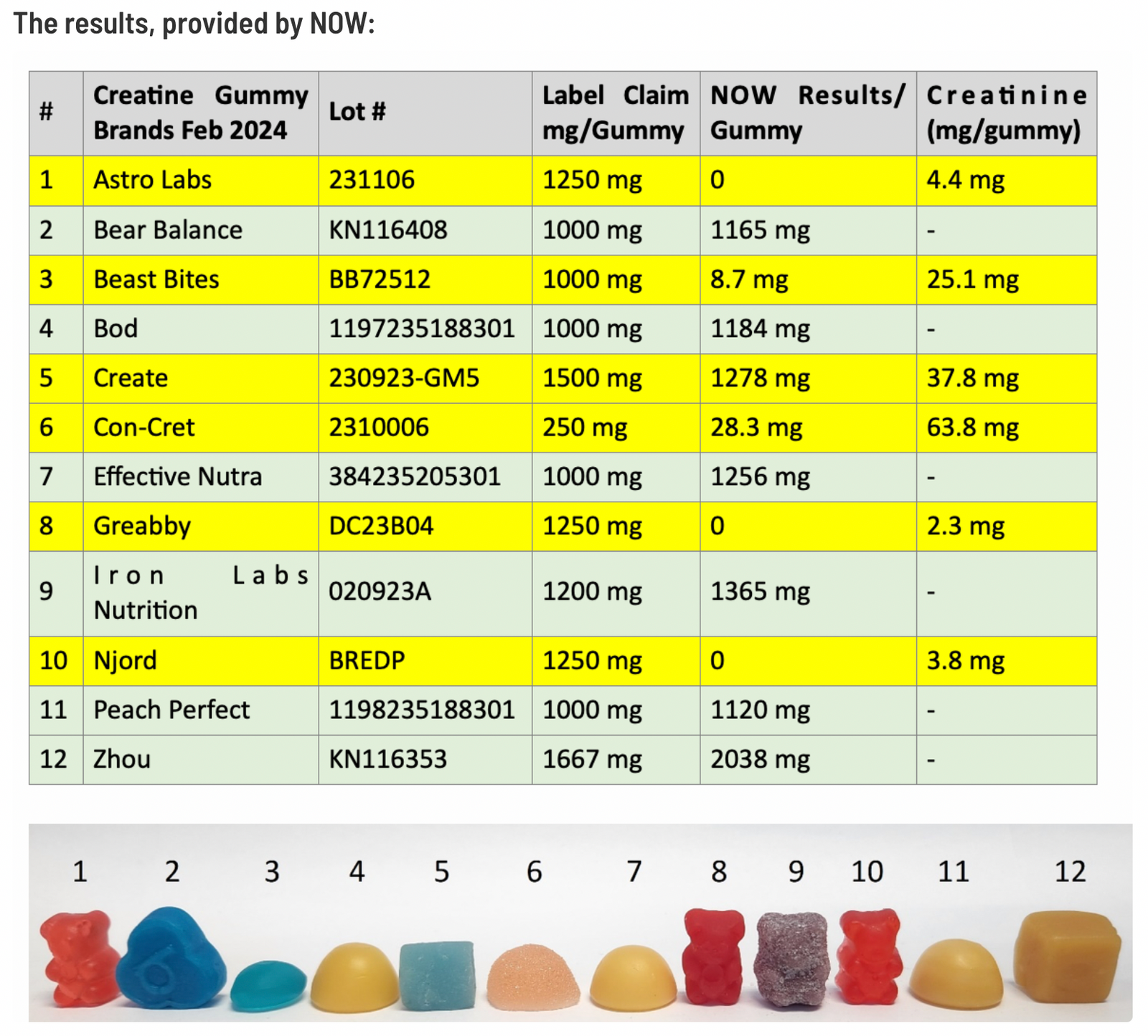Creatine Gummies Failing to Meet Label Claims

Creatine is a naturally occurring substance produced in the body to help muscles generate short-term energy during heavy lifting or high-intensity exercise (1). As awareness of its benefits grows, creatine supplementation has surged in popularity, with the market poised for explosive growth. In 2021, the global creatine market was valued at USD 280.3 million, projected to reach USD 688.38 million by 2031, reflecting a robust compound annual growth rate (CAGR) of 10.5% (2).
With this expanding demand, companies are exploring alternatives to traditional powdered creatine. In early 2022, SpaceX employee Dylan Menter introduced Bear Balanced, claiming the trademarked tagline “World’s First Creatine Gummy” (3).
Creatine monohydrate, the most researched and widely used form of creatine, is the active ingredient in most gummies. However, as creatine gummies gain traction globally, concerns about quality and authenticity have emerged. A recent study by NOW Foods revealed alarming discrepancies: 46% of tested products failed to meet label claims, with five of 12 brands containing minimal to no creatine. Disturbingly, samples from brands that tested negative often shared similar shapes and slight variations in colour, suggesting they originated from the same supplier. Learn more about NOW Foods study here.
Red Flags for Low-Quality or Fake Creatine Gummies
Due to the nature of creatine, certain product characteristics may indicate substandard or fraudulent gummies:
Firstly, a gummy that is clear, translucent or see-through is unlikely to contain creatine. There are a couple reason to this:
-
Creatine's Natural Form:
Creatine monohydrate is a fine, white crystalline powder. It doesn’t dissolve easily in low-moisture formulations like gummies and doesn’t naturally produce a clear or translucent appearance. -
Insufficient Creatine Content:
To achieve a translucent look, the amount of creatine in the gummy might be drastically reduced or replaced with fillers or other substances that dissolve or mix more easily into the formula, potentially undermining its effectiveness. -
Moisture Incompatibility:
Creatine is hydrophilic and can degrade into creatinine (a less effective by-product) when exposed to moisture. Gummies that appear clear or gel-like often involve water-based formulations, which might compromise the stability and potency of the creatine.
Another key indicator for a fake gummy is if the gummy boasts less than a 4:1 ratio (4g gummy to 1g creatine) such as 2:1 due to several formulation and manufacturing limitations:
- Creatine monohydrate is dense: Incorporating higher doses of creatine into a small gummy would require significant space, which limits how much creatine can physically fit into a gummy without making it oversized or altering its texture. A gummy also needs other ingredients which compete for space in the formulation.
- Taste challenges: Creatine itself has a slightly bitter, chalky taste. Higher concentrations in a gummy can make the taste unpleasant, requiring more sweeteners or flavour enhancers to mask it, which may impact the gummy's nutritional profile and appeal.
- Texture and consistency: Gummies rely on ingredients like gelatin, pectin, or starch for their chewy texture. Adding too much creatine can disrupt this balance, resulting in a gritty, brittle, or unstable gummy that doesn't hold its shape.
Lastly, issues have recently arisen where manufacturers have distributed fake certificates to falsely assure product quality, further undermining consumer trust, read more on identifying fake eurofins tests here.
Elevate’s Commitment to Quality
At Elevate, we are committed to delivering a premium product that meets label claims and exceeds industry standards. Our creatine gummies are manufactured in a US FDA-registered, GMP-certified facility. Additionally, we’ve partnered with a NATA-accredited Australian laboratory to rigorously test our products, ensuring transparency and quality. Consumers can access our test results publicly on our website here.
More and more start-up brands are emerging within Australia and globally with a creatine gummy product. We urge consumers to seek testing results from these brands to validate that what they are getting is what they are paying for.
1. Healthline Editorial Team. (n.d.). What is creatine?. Healthline. Retrieved November 20, 2024, from https://www.healthline.com/nutrition/what-is-creatine#basics
2. Business Research Insights. (n.d.). Creatine market: Market research report. Retrieved November 20, 2024, from https://www.businessresearchinsights.com/market-reports/creatine-market-101147
3. Sherman, A. (2023, May 18). Bear Balanced continues growth in nascent creatine gummy category. NutraIngredients-USA. Retrieved November 20, 2024, from https://www.nutraingredients-usa.com/Article/2023/05/18/Bear-Balanced-continues-growth-in-nascent-creatine-gummy-category#:~:text=Dylan%20Menter%20came%20up%20with,%E2%80%9CWorld%27s%20First%20Creatine%20Gummy%E2%80%9D.
4. Jaqua, M. (2024, March 4). NOW testing identifies creatine gummies' failings. WholeFoods Magazine. Retrieved November 20, 2024, from https://www.wholefoodsmagazine.com/articles/16736-now-testing-identifies-creatine-gummies-failings
5. Eurofins. (2020, July). Falsified test reports and certificates: A white paper. Eurofins. Retrieved November 20, 2024, from https://www.eurofins.com/media/12155567/tic-council_-whitepaper-falsified-test-reports-and-certificates-202007.pdf




Leave a comment